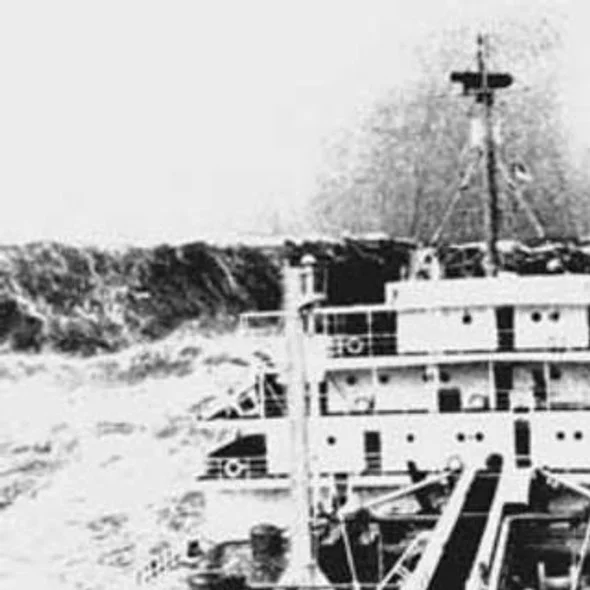Electrical Checklist
- IMPROPER OR ABSENT OVER-CURRENT PROTECTION. This is one of the most common errors committed by all boat builders as well as repair yards and boat owners most commonly found regarding battery charger and alternator circuits. The only exception is for circuits carrying engine-starting loads. For diesel-powered vessels these guidelines are ABYC recommendations, for gasoline-powered vessels these guidelines are federal law.
BONDING. Improperly sized bonding wires. All bonding wires (green wires connecting metal objects such as seacocks, tanks, fuel filter bodies etc.) should be a minimum of 6 AWG or larger. One exception to this rule is the inverter. The bonding wire must be able to carry full DC current and thus, it must be no smaller than the DC cabling, frequently as large as 2 AWG.
BILGE PUMP WIRING. Automatic bilge pump circuits that are wired after the main house battery switch or main circuit breaker. This type of installation prevents the boat from being left in a DC de-energized state, i.e. if the boat owner wants to shut off all DC circuits to minimize the possibility of battery drain or fire, he or she can't because it also shuts the battery switches.
BATTERY SWITCHES LOCATION. Main battery disconnect switches, house, engine start, inverter, thruster, windlass, generator etc. (essentially all high DC current consumers) that are located in the engine room. This makes it difficult to quickly and safely de-energize all DC circuits in the event of an engine room fire. Automatic bilge pumps, as previously mentioned, and battery chargers may be wired independent of battery disconnect switches, provided they are properly over-current protected.
BATTERY SWITCH INSTALLATION. Every battery and battery bank must be equipped with a disconnect switch. Technically, this applies to batteries and battery banks that are capable of supplying over 800 CCA. However, even most of the smallest automotive batteries are capable of supplying this current. Consider it mandatory for every battery and bank for fire prevention and fighting. Ideally, all battery switches should be centrally located, close to the battery banks and outside of engineering spaces. Additionally, all high current consumers, as previously mentioned, should have their own disconnect switches co-located with house and engine disconnect switches.
Failure to properly secure wiring. All wiring must be properly supported throughout its length or be secured every 18 inches. Non-metallic straps or clamps (wire ties) may be used for this purpose EXCEPT over engines, moving shafts, other machinery or passageways if failure would result in a hazardous condition. Any wire or cable that falls onto an engine or other moving machinery or into a passageway that crew might use to escape from a burning or sinking boat creates a hazardous condition.
Battery cables without over-current protection, i.e. cranking circuits, shall be run above normal bilge water levels throughout their length, shall avoid contact with metallic fuel system components (tanks, filters, pipes etc), positive cable shall avoid contact with any part of engine or drive train.
Provisions shall be made to contain spilled electrolyte from batteries (a box, tray or liquid tight fiddle). Fasteners for trays or boxes must be isolated from the spill collection area.
According to ABYC, installed batteries may not move more than 1 inch when a force of 90 pounds is applied for one minute. However, it is much better if batteries are totally immobilized and not allowed to move more than a fraction of an inch when this force is applied.
No battery shall be installed directly above or below a fuel tank, fuel filter or fuel line fitting. Batteries may not be installed directly beneath chargers or inverters.
All battery positive terminals must be insulated by means of a cap or battery box cover.
Absorbed glass mat (AGM) or Gel batteries that are not served by appropriate multi-stage alternator regulators or shore power chargers. This considerably shortens the life of these very expensive batteries. While most trawlers are now equipped with inverter/chargers, most of which can be set for AGM or Gel charge profiles, many charging installations neglect to address engine alternators. Ordinary automotive alternators equipped with unsophisticated regulators, the norm for most marine engines, are inadequate for charging AGM and Gel batteries.
DC conductors shall be sheathed, bundled or otherwise kept separate from AC conductors.
No more than four conductors shall be secured to any one terminal, stud or screw. THIS IS A COMMONLY VIOLATED STANDARD. Better to keep it to just two conductors.
DC switchboards must be designed so no exposed AC parts are accessible while the DC panel is open.
The temperature rating of all wiring located inside engine compartments must be at least 75° C dry. This rating should be clearly printed on every conductor.
All AC splices, connections or terminals must be located within enclosures, and all AC receptacles must be installed within enclosure boxes.
Receptacles provided for the galley shall be located so appliance cords can be plugged in without crossing a traffic area, galley stove or sink.
All receptacles installed in galley, head machinery spaces or on weather decks shall be GFCI protected.
For the safety of anyone working on a vessel's electrical system, vessels equipped with inverters should be so marked at the main AC electrical panel.
Switches need to be exercised on regular basis
Every 6 months check connections on alternators, starters, batteries, engine blocks.






It’s been a long time coming but we now see tangible progress emerging to reduce our dependence on fossil fuel. If the U.S. Navy can prove that it works, isn’t it about time the concept of the modern cruising boat includes hybrid forms of propulsion?